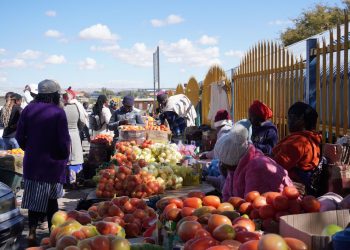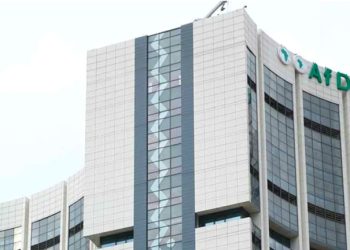
The European Union is setting in motion its partnership with Namibia on rare earth minerals, with a delegation from Brussels touring Andrada Mining’s Uis mine, which has confirmed the presence of significant lithium, tin and tantalum mineralisation.Â
The visit comes after Namibia in November last year, inked a deal with the EU which will ensure the trade block’s access to the country’s rare earth metals to power the global transition to green energy.
The European Union wants easier access to minerals in Namibia and plans geological projects to explore the resources of the country.Â
“Namibia is an important partner for the EU, and we want to work together on solutions to global challenges. Our new strategic partnership on raw materials and green hydrogen is a crucial part of our cooperation. We want to support Namibia in further developing a home grown extractive, refining and recycling industry for raw materials and expand green hydrogen production capacities. This will encourage Namibia’s sustainable growth and development while bringing added value for the local economy by creating new jobs, infrastructures and other opportunities,†European Commissioner for Internal Market Thierry Breton said in Windhoek on Tuesday.Â
This new partnership is embedded in Global Gateway, the EU’s strategy for trusted and sustainable connections with our partner countries, it will fast track the EU and Namibia’s joint green and energy transition.Â
The development of the Green Hydrogen and Critical Raw Materials value chains will be truly transformative for our societies. In Namibia, one of its principal aims is to promote local value addition: creating stable and skilled jobs, as well as sparking investments in infrastructure and transport, says the European Commissioner for International Partnerships, Jutta Urpilainen.Â
A roundtable discussion focused on the opportunities and challenges of this new EU-Namibia Partnership was also held on Tuesday to develop an operational Roadmap for 2023-2024, with concrete joint actions agreed on the COP27 agreement.Â
Namibia’s Minister of Mines and Energy Tom Alweendo and key stakeholders from Namibian and European public, private sector and civil society participated in the discussions.Â
Namibia has significant reserves of rare earth minerals such as dysprosium and terbium needed for permanent magnets in the batteries of electric cars and wind turbines.Â
Namibia Critical Metals’s Lofdal heavy rare earth project has also been found to have the potential to become a “significantly” bigger operation than the previous studies, based on the results of a new preliminary economic assessment (PEA).Â
The PEA is based on mining only 26 million tonnes of resource, or about 50% of the 53 million tonnes in the mineral resource estimate of June 2021. The project will have a mine life of 16 years, with 13 million tonnes of low-grade stockpile which could expand the life of the mine.Â
Namibia is set to receive close to N$9 billion (€500 million) from the European Investment Bank to support the country’s renewable energy projects, including green hydrogen.
Â











